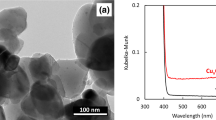Abstract
The International Organization for Standardization (ISO) was used to evaluate antibacterial activity by titanium dioxide (TiO2) photocatalysis since 2006. We evaluated photocatalytic inactivation of Qβ and T4 bacteriophages induced by low-intensity, long-wavelength ultraviolet A (UVA; 0.1 mW cm−2 and 0.001 mW cm−2) irradiation on a TiO2-coated glass plate using the ISO methodology. The results indicated that both bacteriophages were inactivated at 0.001 mW cm−2 UVA. The intensity of UV light, including long-wavelength light (UVA), is very low in an actual indoor environment. Thus, TiO2 photocatalysis can be beneficial for inactivating viruses in an indoor environment. Experiments using qPCR and bovine serum albumin degradation assume that viral inactivation is caused by outer viral protein disorder and not by viral RNA reduction by reactive oxygen species produced during TiO2 photocatalysis. Furthermore, we showed that the ISO methodology for standard testing of antibacterial activity by TiO2 photocatalysis can be applied to assess antiviral activity.
Similar content being viewed by others
References
A. Fujishima and K. Honda, Electrochemical photolysis of water at a semiconductor electrode, Nature, 1972, 238, 37–38.
A. Fujishima, A. Xintong and D. A. Tryk, TiO2 photocatalysis and related surface phenomena, Surf. Sci. Rep., 2008, 63, 515–582.
C. Wei, W. Y. Lin, Z. Zaianl, N. E. Williams, K. Zhu, A. P. Kruzic, R. L. Smith and K. Rajeshwar, Bactericidal activity of TiO2 photocatalyst in aqueous media: Toward a solar-assisted water disinfection system, Environ. Sci. Technol., 1994, 28, 934–938.
H. Ryu, D. Gerrity, J. C. Crittenden and M. Abbaszadegan, Photocatalytic inactivation of Cryptosporidium parvum with TiO2 and low-pressure ultraviolet irradiation, Water Res., 2008, 42, 1523–1530.
K. Sunada, Y Kikuchi, K. Hashimoto and A. Fujishima, Bactericidal and detoxification effects of TiO2 thin film photocatalysts, Environ. Sci. Technol., 1998, 32, 726–728.
Y. Ohko, Y. Utsumi, C. Niwa, T. Tatsuma, K. Kobayakawa, Y. Satoh, Y. Kubota and A. Fujishima, Self-sterilizing and self-cleaning silicone catheters coated with TiO2 photocatalyst thin films: A preclinical work, J. Biomed. Mater. Res., 2001, 58, 97–101.
Y. Yao, Y. Ohko, Y. Sekiguchi, A. Fujishima and Y. Kubota, Self-sterilization using silicone catheters coated with Ag and TiO2 nanocom-posite thin film, J. Biomed. Mater. Res. B, 2007, 85, 453–460.
Y. Sekiguchi, Y. Yao, Y. Ohko, K. Tanaka, T. Ishido, A. Fujishima and Y. Kubota, Self-sterilizing catheters with titanium dioxide photocata-lyst thin films for clean intermittent catheterization: Basis and study of clinical use, International Journal of Urology, 2007, 14, 426–430.
Y. Li, P. Leung, Y. Yao, Q. W. Song and E. Newton, Antimicrobial effect of surgical masks coated with nanoparticles, J. Hosp. Infect., 2006, 62, 58–63.
H. Nakamura, M. Tanaka, S. Shinohara, M. Gotoh and I. Karube, Development of a self-sterilizing lancet coated with a titanium dioxide photocatalytic nano-layer for self-monitoring of blood glucose, Biosens. Bioelectron., 2007, 22, 1920–1925.
K. Sunada, T. Watanabe and K. Hashimoto, Studies on photokilling of bacteria on TiO2 thin film, J. Photochem. Photobiol., A, 2003, 156, 227–233.
T. Matsunaga, R. Tomoda, T. Nakajima and H. Wake, Photoelectrochemical sterilization of microbial cells by semiconductor powders, FEMS Microbiol. Lett., 1985, 29, 211–214.
T. Matsunaga, R. Tomoda, T. Nakajima, N. Nakamura and T. Komine, Continuous-sterilization system that uses photosemiconductor powders, Appl. Environ. Microbiol., 1988, 54, 1330–1333.
J. C. Ireland, P. Klostermann, E. W. Rice and R. M. Clark, Inactivation of Escherichia coli by titanium dioxide photocatalytic oxidation, Appl. Environ. Microbiol., 1993, 59, 1668–1670.
M. Cho, H. Chung, W. Choi and J. Yoon, Different inactivation behaviors of MS-2 phage and Escherichia coli in TiO2 photocatalytic disinfection, Appl. Environ. Microbiol., 2005, 71, 270–275.
M. Kalbacova, J. M. Macak, F. Schmidt-Stein, C. T. Mierke and P. Schmuki, TiO2 nanotubes: Photocatalyst for cancer cell killing, Phys. Status Solidi RRL, 2008, 2, 194–196.
R. Cai, Y. Kubota, T. Shuin, H. Sakai, K. Hashimoto and A. Fujishima, Induction of cytotoxicity by photoexcited TiO2 particles, Cancer Res., 1992, 52, 2346–2348.
P. C. Maness, S. Smolinski, D. M. Blake, Z. Huang, E. J. Wolfrum and W. A. Jacoby, Bactericidal activity of photocatalytic TiO2 reaction: toward an understanding of its killing mechanism, Appl. Environ. Microbiol., 1999, 65, 4094–4098.
S. Lee, M. Nakamura and S. Ohgaki, Inactivation of phage Q-beta by 254 nm UV light and titanium dioxide photocatalyst, J. Environ. Sci. Health, Part A: Toxic/Hazard. Subst. Environ. Eng., 1988, 33, 1643–1655.
S. Lee, K. Nishida, M. Otaki and S. Ohgaki, Photocatalytic inactivation of phage Qb by immobilized titanium dioxide mediated photocatalyst, Water Sci. Technol., 1997, 35, 101–106.
D. Gerrity, H. Ryu, J. Crittenden and M. Abbaszadegan, Photocatalytic inactivation of viruses using titanium dioxide nanoparticles and low-pressure UV light, J. Environ. Sci. Health, Part A: Toxic/Hazard. Subst. Environ. Eng., 2008, 43, 1261–1270.
I. Paspaltsis, K. Kotta, R. Lagoudaki, N. Grigoriadis, I. Poulios and T. Sklaviadis, Titanium dioxide photocatalytic inactivation of prions, J. Gen. Virol., 2006, 87, 3125–3130.
H. Shima (ed.), JIS R 1702. Fine ceramics (advanced ceramics, advanced technical ceramics)—Test method for antibacterial activity of photocatalytic products under photoirradiation and efficacy. Japanese Standards Association, Tokyo, Japan, 2006.
ISO 27447: 2009(E). Fine ceramics (advanced ceramics, advanced technical ceramics)—Test method for antibacterial activity of semiconducting photocatalytic materials, Geneva, Switzerland, 2009.
N. Kashige, Y. Karita, Y. Nakashima, F. Miake and K. Watanabe, Mechanism of the photocatalytic inactivation of Lactobacillus casei phage PL-1 by mania thin film, Curr. Microbiol., 2001, 42, 184–189.
H. Katayama, A. Shimasaki and S. Ohgaki, Development of virus concentration method using negatively charged membrane by alkaline elution after acid rinse, Journal of Japan Society on Water Environment, 2002, 25, 469–475, in Japanese.
Author information
Authors and Affiliations
Corresponding author
Rights and permissions
About this article
Cite this article
Ishiguro, H., Nakano, R., Yao, Y. et al. Photocatalytic inactivation of bacteriophages by TiO2-coated glass plates under low-intensity, long-wavelength UV irradiation. Photochem Photobiol Sci 10, 1825–1829 (2011). https://doi.org/10.1039/c1pp05192j
Received:
Accepted:
Published:
Issue Date:
DOI: https://doi.org/10.1039/c1pp05192j




